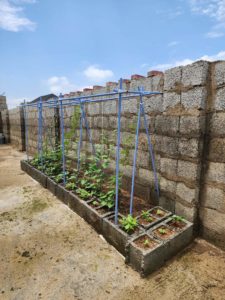Nigeria becomes global LNG market laggard

![]()
Sopuruchi Onwuka
Global supply of liquefied natural gas or LNG jumped by significant 5.0 percent in 2022 as increased flow of supply manly from the United States and Middle East shifted from China to Europe where pipeline gas from Russian suffered the diplomatic and trade sanctions.
But the optimal revenue benefits of the bullish global LNG trade eluded Nigeria from where volumes of supply dropped in the year and global growth outlook is also the slowest in the new competition among producing countries for unfolding market opportunities.

According to global LNG market data for 2022 released by CEDIGAZ, Africa’s biggest suppliers led by Nigeria and Algeria were laggards in a market that went bullish as the diplomatic outcomes of the Russian invasion of Ukraine caused a reset in the market; cutting Russian pipeline gas feed to
industrialized Europe, and also cutting LNG flow to China.
According to market report from CEDIGAZ, LNG exports from Algeria and Nigeria decreased by a combined 0.5 billion cubic feet per day (Bcf/d) as both countries continued to experience issues with domestic natural gas production, which is used as a feedstock at LNG export facilities.
According to the report, global LNG trade increased by 5.0 percent from 2021 levels to an average of 51.7 Bcf/d in 2022. The 2022 LNG trade volumes, according to the company, followed the growth in the Unites States’ liquefaction capacity and increased LNG demand in Europe. It noted that LNG in Europe continued to displace pipeline natural gas imports from Russia.
According to the report, LNG exports from the United States increased by 16 percent or 1.4 Bcf/d from 2021 volumes to 10.2 Bcf/d, posting the largest increase of all LNG-exporting countries.
The United States became the world’s top LNG exporter for the first time in the first half of 2022 after the new Calcasieu Pass LNG export facility was commissioned..
However, when the US slid to its earlier third place after its Freeport LNG export terminal shut down in the second half of the year, yielding the first and second positions in the global supply chart to Qatar and Australia respectively. Qatar’s exports averaged 10.5 Bcf/d, and Australia’s exports averaged 10.4 Bcf/d.
CEDIGAZ stated that six countries: Malaysia, Norway, Trinidad and Tobago, Russia, Oman, and Equatorial Guinea increased LNG exports in the year by a combined 1.3 Bcf/d.
On the demand side, the report holds that Europe posted the highest growth in LNG imports with 65 percent or 6.5 Bcf/d compared to 2021 levels.
LNG imports into EU-27 countries and the UK increased substantially by 73 percent or 6.3 Bcf/d as the continent slammed displaced significant pipeline gas imports from Russia over the war in Ukraine.
According to the report; France, the UK, Spain, the Netherlands, and Belgium increased LNG imports by a combined 5.4 Bcf/d, accounting for 85 percent of the total increase.
Japan returned to its position as the world’s top LNG importer for 50 years, discounting 2021 when China temporarily surfed up to the top. The decline in China was due, in part, to its zero-COVID policies, increased imports by pipeline from Russia, and greater use of coal.
However, LNG imports declined by 9.0 percent or 3.2 Bcf/d in Asia and by 34 percent or 0.8 Bcf/d in Latin America compared with 2021. Asian countries that rely more on global LNG spot markets reduced spot purchases because of record-high LNG prices last year.
LNG imports into India, Pakistan, and Bangladesh also declined by a combined 18 percent or 0.9 Bcf/d.
In Latin America, Brazil led import cuts with70 percent or 0.6 Bcf/d after displacing gas fired thermal power plants with hydropower generation.
A parallel LNG production capacity chart viewed by The Oracle Today also showed that Nigeria slid backwards in actual output in 2022, an inverse movement that negates the country’s longstanding pledge to rapidly boost capacity to match global peers.
The data which showed annual LNG export from producing countries captured the vandalism induced sub-optimization in Nigeria with volumes of export falling from 2.5 Bcf/d to about 1.9 Bcf/d.
As earlier stated in this report, Qatar, Australia and the United States compete in the front row of the competition with respective outputs of above 10 Bcf/d. The United States remains outstanding in the chart with phenomenal capacity growth from about 2.0 Bcf/d in 2018 to 10.2 Bcf/d in 2022.
Russia maintains it middle position with about 4.0 Bcf/d, Malaysia grew to some 3.9 Bcf/d, and Indonesia grew from about 1.9 Bcf/d to some 2.3 Bcf/d. Oman and Algera stagnated at about 1.8 Bcf/d and the rest of the exporters jointly hold some 7.0 Bcf/d.
Nigeria’s total liquefaction and export capacity is held by the Nigeria Liquefied Natural Gas (NLNG) Limited which secures guaranteed feedstock from its shareholders: Nigerian National Petroleum Company (NNPC) Limited, Shell, Total and Eni. The company currently sources additional feedstock from some indigenous companies as the three international oil majors scale down and divest operated assets in Nigeria’s conventional play.
Some of the remaining and divested assets are however currently troubled with sabotage and pipeline outages that translate to inadequate supply to the NLNG processing plants at Bonny Island where the company is also dedicatedly expanding its plant capacity despite glaring challenges.
The ongoing NLNG-7 project is expected boost the company’s liquefaction capacity by some 8.0 metric tons per annum (mtpa) from current 24 mtpa to 30.0 mtpa.
The NLNG, The Oracle Today reports, is the second largest income earner to the country outside the NNPC Limited. It is also earns the biggest foreign exchange income for the country, and pays the biggest accountable taxes to the country from its operations.
Managing Director of the company, Mr Phillip Mshelbila, has severally called on government to address the issues in the operating environment to attract global investable funds into the Nigerian petroleum industry from where major international oil companies currently seek to ext.


